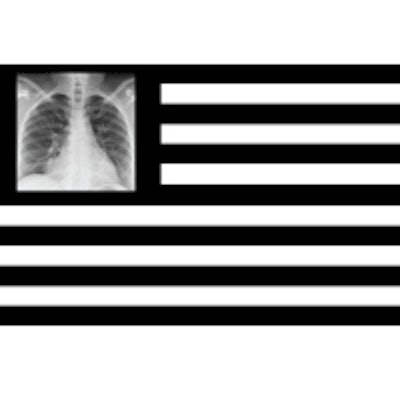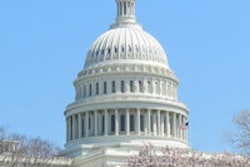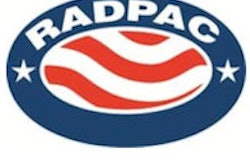
Saying it's time for radiologists to give back, a new article in the Journal of the American College of Radiology calls on medical imaging professionals to recognize their responsibility to protect their specialty. The authors believe this concept of "citizenship" is key to defending radiology against future threats.
Repeated calls for radiologists to support and secure the future of the specialty have not increased activism, resulting in a dangerous state of affairs in the current healthcare environment, in which radiology has become a convenient target for cost-cutting efforts.
In response to this situation, the American College of Radiology (ACR) established a Commission on Human Resources, which has developed a definition of citizenship in the specialty and a way to measure and value citizenship activities, according to Dr. Christoph Lee, of the University of Washington, and colleagues (JACR, April 15, 2013).
 Dr. Christoph Lee from the University of Washington.
Dr. Christoph Lee from the University of Washington.
"Although the rights and privileges of being part of the radiology community have positioned its members for high-paying positions and central roles in patient care, the other half of the equation for radiologists -- their responsibilities to upholding the profession of radiology -- is largely being ignored," Lee and colleagues wrote. "It is this latter half of the equation, what current radiologists give back to the profession, that will determine our future survival and success."
Voluntary participation is spotty at best, according to Lee's group. Although 68% of U.S. radiologists are members of ACR, in a recent campaign soliciting financial donations for the American College of Radiology Imaging Network (ACRIN) research fund, only about 100 individual ACR members made contributions. And last year, only 9% of the ACR membership contributed to the Radiology Advocacy Alliance political action committee (RADPAC).
There's a crisis in radiology citizenship, Lee and colleagues wrote.
"Merely hoping that individual radiologists will answer a call to bolster and secure the future of their own profession is not working," they wrote.
What exactly is 'radiology citizenship'?
Citizenship goes beyond the expected values of professionalism and ethics, encompassing activities that strengthen the profession but are not mandated by the usual daily responsibilities of practicing radiologists, according to the authors. The group listed 10 key activities that fall under the category of citizenship:
- Face-to-face patient interaction
- Group practice leadership and administration
- Serving on medical boards and committees
- Active involvement in community service organizations
- Volunteer clinical instruction and mentoring
- Political action
- Participating in radiology societies and organizations
- Participating in general medicine societies
- Conducting or supporting research
- Volunteering for global health and international radiology aid efforts
"Citizenship is all the things that happen behind the scenes," Lee told AuntMinnie.com. "It's radiologists working to benefit the community and specialty without compensation."
RCUs: A metric of citizenship
Lee and his team suggest that radiology citizenship could be measured using two metrics: volunteer time and financial contributions. To capture both of these metrics, the Commission on Human Resources is proposing a new unit of citizenship activity, like the relative value unit (RVU) used to measure clinical activity: the relative citizenship unit (RCU). A basic RCU could be defined as one hour of citizenship activity or $250 of monetary contribution, according to Lee and colleagues.
"In the same general concept of the RVU, a relative citizenship unit would help quantify individual contributions to the profession that are not captured by the RVU," they wrote.
What would be a reasonable percentage of time to devote to furthering the profession? Between 5% and 10%, which translates into 2.5 to five hours per week for radiologists practicing 50 hours per week, according to the authors. As for monetary support to the profession, Lee and colleagues suggested that all radiologists should give 1% of their income to support the ACR, subspecialty societies, political action committees, research and education funds, and community outreach efforts.
"One percent is not a large proportion of money to contribute back to a specialty that has given you the ability to demand high income," Lee told AuntMinnie.com. "Research and development need to be supported in order for radiology to flourish."
How would citizenship be rewarded? By quantifying the number of RCUs over a period of time (perhaps a year), a radiologist's total citizenship productivity (TCP) could be calculated -- and acknowledged at both the practice and national society level, the authors wrote.
"Such a system would allow individual radiologists flexibility in obtaining a predetermined minimum TCP similar to minimum continuing medical education requirements," they wrote. "[And] although the RCU-TCP system can be implemented at the local group practice level, this concept should also be considered at the national society level. If the ACR were to officially promote, measure, and acknowledge radiology citizenship at a national level, more radiologists may be apt to become active in citizenship activities."
Radiologists will react positively to their citizenship activities being measured, Lee told AuntMinnie.com.
"Many radiologists are already participating in a lot of citizenship activities, and this would give them a sense of accomplishment and acknowledgment that is lacking right now," he said. "Our hope is that not only will individual groups figure out ways to measure and promote radiology citizenship, but also national societies will use these metrics to acknowledge the work group practices are doing."




















